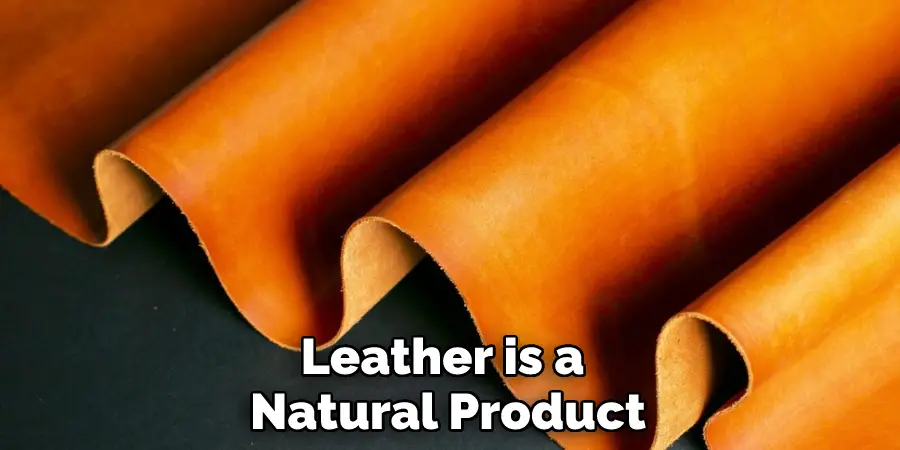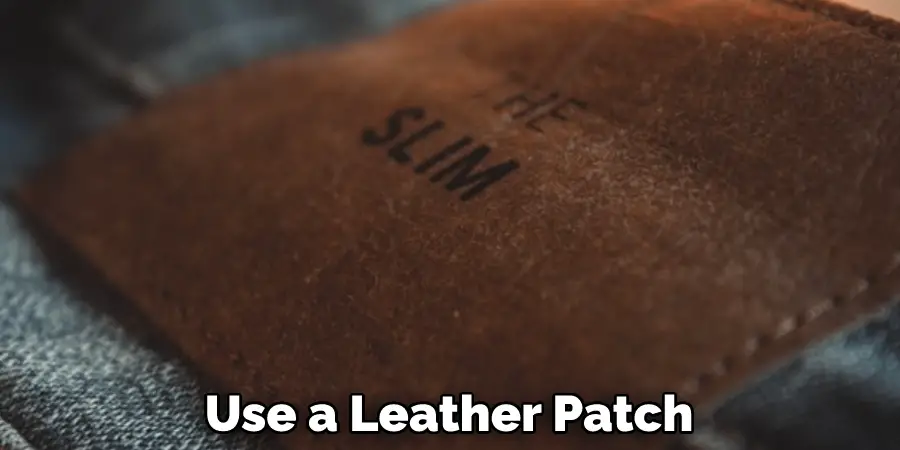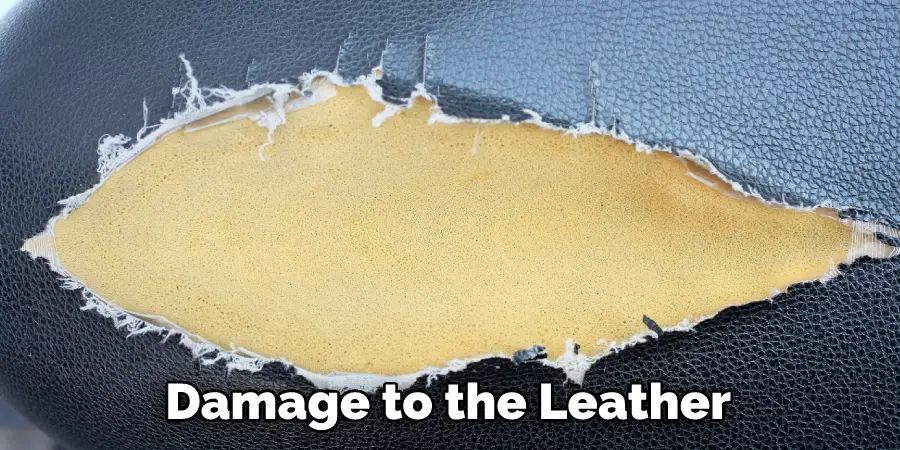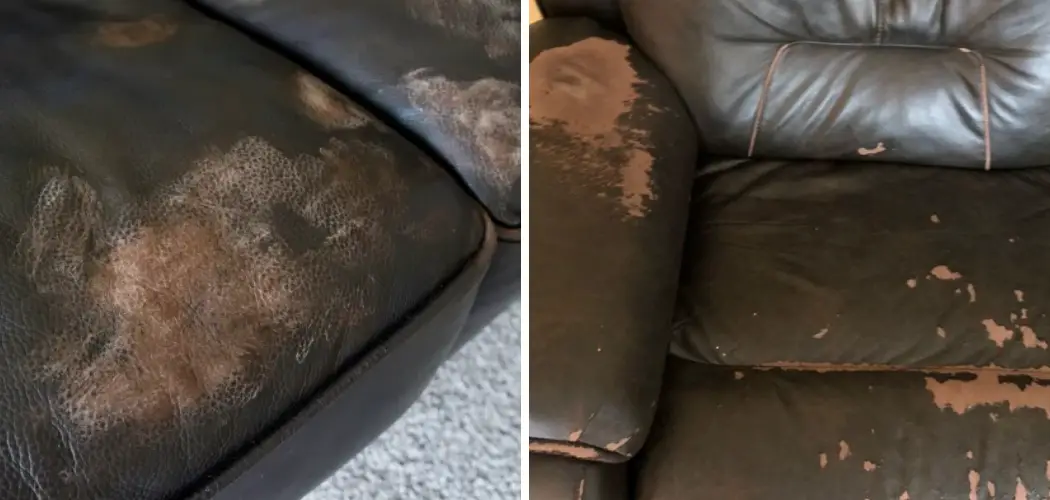Is your leather couch starting to peel? Don’t worry, it’s a common problem and there are several ways to fix it. In this blog post, we’ll discuss the different methods for repairing peeling leather and we’ll show you how to do it yourself.

We’ll also provide some tips on how to repair peeling leather in the future. So, whether your couch is starting to show its age or you just moved into a new place with old furniture, read on for some helpful advice.
Tools You Will Need
- Leather Cleaner
- Leather Conditioner
- Vinyl and Leather Repair Kit
- Soft Cloth or Sponge
8 Unique Steps Guide on How to Repair Peeling Leather
1. Clean the Leather
When it comes to leather furniture, professional cleaning and repair are always best. However, if you’re gentle and careful, it is possible to do some simple repairs at home. Start by cleaning the leather with a leather cleaner. This will remove any dirt and dust that could get in the way of repairs. Be sure to use a gentle, non-abrasive cleanser so as not to damage the leather further.
Once the surface is clean, you can begin to make small repairs. Use a thin layer of leather adhesive to attach patches to larger holes or tears. For smaller cracks and scratches, fill them in with tiny dots of leather paint. Once all the repairs are complete, give the piece a final once-over with the cleaner to remove any residue. With a little time and effort, your damaged furniture can be restored to its former glory.
2. Apply a Leather Conditioner
Leather is a natural product that can last for many years with proper care. However, leather is also susceptible to drying out, cracking, and fading if it is not properly conditioned. Leather conditioners help to replenish the natural oils in the leather, keeping it supple and preventing it from cracking. Many leather conditioners also contain UV protectants that help to prevent the leather from fading.

Whether you have a leather couch, jacket, or pair of shoes, regular conditioning will help to keep the leather looking its best. Apply a conditioner at least once a year, and more often if the leather is exposed to sunlight or other harsh conditions. With proper care, your leather goods will stay looking like new for many years to come.
3. Use a Vinyl and Leather Repair Kit
Peeling leather or vinyl can be unsightly and may make your furniture look worn, but it’s usually not a serious problem. In most cases, minor peeling can be corrected with a repair kit. These kits typically come with a piece of matching fabric, a color-matched adhesive, and easy-to-follow instructions.
To use the kit, simply clean the area around the peel, cut the fabric to size, and apply the adhesive. Then press the fabric into place and let it dry. Once dry, the patch should be barely noticeable. However, if the peeling is extensive or you’re not confident in your ability to correctly use the kit, it’s best to consult a professional upholsterer for help.
4. Use an Adhesive
Leather is a natural material that is both strong and flexible. However, it is also susceptible to damage from cuts and scratches. One way to repair minor damage is to use a leather patch. To apply a leather patch, first clean the area around the damage. Then, cut the patch so that it is slightly larger than the damaged area.
For more significant peeling, use an adhesive to bond the two pieces of leather together. Use a soft cloth or sponge to apply the adhesive, making sure that all sides of the patch are sealed. Once the adhesive has dried, buff the area with a soft cloth to blend the patch into the surrounding leather. With proper care, a leather patch can help extend the life of your favorite piece of furniture.

5. Allow the Adhesive to Dry
As anyone who has ever done a craft project knows, getting the adhesive to dry correctly is crucial. If it is too wet, the two pieces will not adhere properly. If it is too dry, the adhesive will not be strong enough to hold the pieces together. The key is to find the happy medium, and that means giving the adhesive a few minutes to dry before pressing the two pieces together.
Allowing the adhesive to set for a few minutes ensures that it will be just wet enough to create a strong bond, while also being dry enough to prevent any accidents. So next time you are working on a project, make sure to give the adhesive ample time to dry before moving on.
6. Fill Any Gaps or Holes
Over time, even the best-made leather goods will start to show signs of wear and tear. Gaps and holes are especially common in areas that see a lot of use, such as on the armrests of chairs or the handles of bags. While these flaws can be cosmetic, they can also weaken the overall structure of the piece. Fortunately, there are several leather repair kits on the market that can help to fill in any gaps or holes.
These kits typically come with a color-matched filler that can be used to restore the look of your leather goods. In addition, many kits also include tools to help blend the filler with the surrounding leather so that the repair is nearly undetectable. With a little time and effort, you can use a leather repair kit to keep your favorite pieces looking like new for years to come.
7. Leave the Leather to Dry
After any repair work is completed, it is important to leave the leather to dry for at least an hour. This allows the adhesive to set and the repair to become more durable. Additionally, it helps to prevent any further damage to the leather. Once the repair is dry, it is important to avoid exposing it to excessive heat or direct sunlight. These can cause the leather to warp or crack. With proper care, your repair should last for many years.

8. Apply a Fresh Coat of Leather Conditioner
Applying a fresh coat of leather conditioner is an important step in keeping your repair from drying out and cracking. Without conditioning, the leather will eventually become brittle and will be more susceptible to damage. When applying the conditioner, be sure to use a clean, soft cloth and follow the directions on the packaging. If you’re not sure how often to condition your leather, consult a professional. With proper care, your leather should stay soft and supple for years to come.
8 Additional Tips on Preventing Your Leather Furniture From Peeling
- Keep your leather furniture out of direct sunlight.
- Dust and vacuum your leather furniture regularly to remove dirt and debris.
- Use a leather conditioner on your furniture every few months to keep the leather from drying out and cracking.
- Avoid using harsh cleaners or chemicals on your leather furniture.
- Do not allow pets or children to play on your leather furniture.
- Avoid sitting on the arms or back of your leather furniture to prevent stretching and sagging.
- Place coasters under all drinks to prevent water rings from forming on the surface of the leather.
- Have your leather furniture professionally cleaned every few years to remove built-up dirt and grime
How to Repair Peeling Leather on a Couch?
If you have a leather couch that is starting to show signs of wear and tear, you may be wondering how to repair it. Peeling leather is one of the most common problems with leather furniture, but it is also one of the easiest to fix. With a little patience and the right supplies, you can have your couch looking like new in no time.
The first step is to remove any loose pieces of leather. Use a sharp knife to carefully cut away any pieces that are peeling or flaking off. Be sure to only remove the damaged portion of the leather; if you cut too deeply, you could damage the underlying fabric. Once all of the loose pieces have been removed, use a vacuum cleaner to remove any dust or dirt from the area.
Next, apply a thin layer of leather adhesive to the back of a piece of replacement leather. Then, press the replacement piece into place and hold it there until the adhesive sets. Repeat this process until all of the damaged areas have been covered. Once all of the repairs have been made, allow the adhesive to dry completely before using the couch again. With a little effort, you can easily repair peeling leather and extend the life of your couch!

Frequently Asked Questions
Is Peeling Leather Repairable?
The repairability of a leather item will vary depending on the type and severity of the damage. However, some common repairs that can be done to leather items include stitching tears, holes, and cuts. In most cases, these repairs can be done using basic sewing supplies and techniques.
Can You Stop Leather From Peeling?
The best way to stop leather from peeling depends on the specific circumstances and treatment regimen that you use. However, some general tips that may help include:
1. Use a protective coating or sealant to prevent the skin from drying out and cracking.
2. Apply the treatment regularly and continue applying it until the desired result is achieved.
3. Use a non-abrasive cleaner to remove any build-up or residue that may be causing the leather to peel.
4. Avoid using harsh chemicals or abrasives, as these may damage the skin and lead to further peeling.
5. Follow the manufacturer’s instructions for use, as each product may require a different approach to achieving the desired results.
What is It Called When Leather Peels?
Leather peels are a common phenomenon in which the skin on the surface of leather becomes thin and separates from the underlying leather fibers. This separation can cause the leather to tear, fray, or even peel away, leaving the skin exposed. Leather peels can occur spontaneously or as a result of exposure to environmental factors such as moisture, sunlight, heat, or chemicals.
Leather peels are typically harmless and do not typically require treatment. However, if they become severe or continue to spread, they may need to be treated with a topical cream or ointment. In some cases, surgery may be necessary to remove the entire leather peel layer.
Does Leather Peel in the Sun?
Leather does not peel in the sun, but it may discolor over time. To keep your leather looking its best, avoid exposing it to direct sunlight or other oxidative agents. Instead, keep your leather stored in a cool, dry place and apply a light coat of protective oil regularly to help protect it from the elements.
Conclusion
Peeling leather is a common problem, but it’s relatively easy to fix. With a little bit of effort and the right supplies, you can easily repair peeling leather. You should carefully determine how to repair peeling leather.
By following these instructions, you will have your furniture looking like new in no time. Do you have any tips for repairing leather? Share them with us in the comments below.

